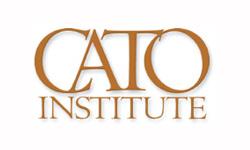 The Cato Institute has released a report that “presents a chapter-by-chapter analysis of the Trans Pacific Partnership (TPP) from a free trader’s perspective.” It notes that TPP is really more of a “managed” or “freer” trade agreement than an agreement that really promotes “free trade” in a classic sense. It finds that overall, the “terms of the TPP are net liberalizing,” but that some of the individual chapters – including the intellectual property chapter – are actually “protectionist.”
The Cato Institute has released a report that “presents a chapter-by-chapter analysis of the Trans Pacific Partnership (TPP) from a free trader’s perspective.” It notes that TPP is really more of a “managed” or “freer” trade agreement than an agreement that really promotes “free trade” in a classic sense. It finds that overall, the “terms of the TPP are net liberalizing,” but that some of the individual chapters – including the intellectual property chapter – are actually “protectionist.”
Cato lists what it considers to be the pros and cons of the terms of the TPP’s intellectual property chapter, which it generally views as less strict than previous trade agreements, such as the U.S.-Korea FTA. However, it notes that the agreement generally requires trading partners to strengthen patent and copyright protections for rightholders, while “merely permitting” limitations. Cato also argues that the TPP may not require the U.S. to change its level of intellectual property protection, but it locks the U.S. into its current levels.
It is also clear that the authors do not think intellectual property rights requirements ought to be a standard part of trade agreements, and they worry about the effects of over-strong protection:
While a case can be made for some level of intellectual property protection, it is not clear why such protection should be included in trade agreements, as opposed to international intellectual property agreements. Moreover, the protections that have been included arguably go beyond what is necessary to promote innovation – one of the main justifications for these protections. And we must be vigilant about ensuring that the monopoly privileges bestowed through IP protections do not impede competition and hurt consumers any more than necessary.
This calls to mind other free-traders who have been skeptical of the placement of intellectual property into the world trading system. For instance, Jagdesh Bhagwati has argued that that intellectual property protection “does not belong in the WTO,” because the WTO should promote “mutually gainful trade.” Intellectual property protection, on the other hand, was a means to transfer resources from poor countries to rich ones. Said Bhagwati “We were turning the WTO… into a royalty-collection agency, by pretending through continuous propaganda… that somehow the question was ‘trade-related’.”
While suggesting that the intellectual property chapter does not belong in the TPP, Cato acknowledges that its inclusion may be necessary to win political support needed to ratify the overall agreement. Of course, TPP ratification is looking very far from certain these days.
Cato’s full report is here – see pages 57-59 for the section on the IP chapter.




